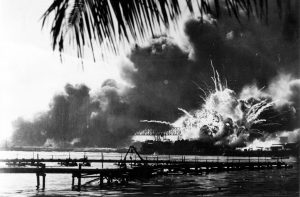The dominant narrative tells and shows us that war looks like…
WW1. WW2. Vietnam War. Bombs. Guns. Men. Death. Enemies. Tension.

Glory. Honor. Power. Protection. National security. Memorials. Veterans. Social Mobility.

Beyond the romanticized documentation of war, war is scary as it affects everyone and all aspects of life. The US is an empire that has built its status and power through its military. This give-and-take relationship, in which the US military “provides” the resources to “improve” the quality of life in the foreign land while dispossessing the native people is a traumatic, painful, and violent experience. In the words of my block 6 Professor Nadia Guessous, living in America gives us the “luxury of distance” from war. In our day to day life, we do not hear or see planes flying above our heads – ready to drop a bomb anytime; we do not hear or see bullets piercing through skin nor people bleeding to death; we do not hear or see frantic cries for help. And with this “luxury of distance”, we somehow become normalized to think people who are not directly involved in combat wars are safe and well-protected. War is not always about direct combat. As Dolma mentions in her post, “Asian American in the Time of Coronavirus,” war can be used as a metaphor to describe intangible “enemies.”
War stories are references that we often rely on to catch a glimpse on how it affects the physical, mental, and emotional wellbeing of people with war memories. But how do we know what is a “true” war story? For all we know, the author could have written from his or her imagination or draw from memories with missing pieces and made-up experiences. The truth is complicated and we should be skeptical with the information we consume, especially if it fulfills our expectations that the story is written by men (as the majority war stories are) and about someone who participated in combat. Rather, peeling off the layers of war can show us that war stories are so complex. They can be about familial relationships between the parents who experienced war and their children, about the intergenerational trauma and identity struggles, about the different silences and sacrifices made, about emotions that are hard to express, about militarized spaces and intimacies, about racism, and more. As Tim O’Brien writes in “How to Tell a True War Story,” a “true war story is never about war.” I thought something my classmate said was very endearing – if we are so caught up with finding the “truth,” we will “miss the beautiful irregular mundaneness of these stories, how they speak so closely to our hearts.”